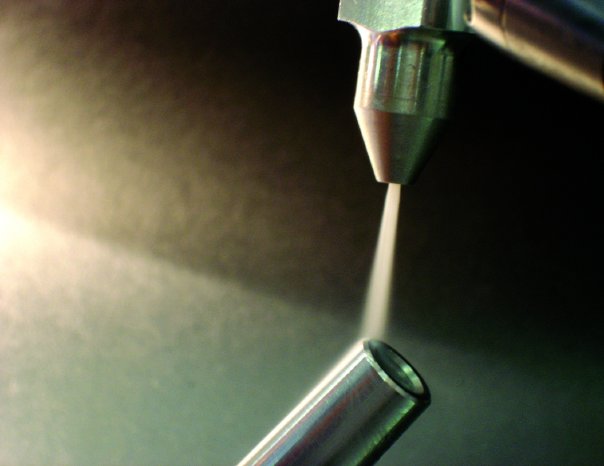In numerous industry sectors, demands placed upon parts cleanliness have been increasing steadily in recent years. At the same time, cost pressure is on the rise. Manufacturing companies are thus faced with the question of how they can sensibly achieve the required degree of cleanliness in an economical and ecological fashion. The exhibitors at parts2clean will provide answers in the form of an overview covering the latest developments and the state-of-the-art.
Cleanliness Requirements Determine the Cleaning Process
Due to the fact that there's no magic formula for the efficient fulfilment of specified cleaning requirements, each cleaning task necessitates an individually matched solution consisting of a cleaning process, a cleaning agent and a cleaning basket. Whether the workpieces will be cleaned as bulk goods or individually positioned items in a batch process depends on the one hand on geometry and sensitivity, and on the other hand on the specified degree of cleanliness. In either case, a cleaning basket in which the parts can be well rinsed by the cleaning agent from all sides supports the process. This type of good accessibility also pays for itself in terms of required drying time and reduced media carry-over, allowing for shorter cycle times and thus greater throughput and a longer bath service life.
For parts with complex shapes and demanding cleanliness requirements, individual wet parts cleaning with aqueous cleaning agents or solvents is advisable. This allows for targeted treatment of channels, drill-holes, undercuts and functional surfaces. In addition to the above mentioned reasons, the avoidance of damage resulting from unnecessary parts handling also speaks in favour of individual parts cleaning.
If the parts not only need to be cleaned, but rather deburred as well, flexible systems are available in which the workpieces are deburred by means of high pressure, brushing and rigid tools, and are also cleaned. A new lance guiding system for high pressure deburring not only allows for easy adaptation to various workpiece shapes, it also offers cost advantages in comparison with conventional robot systems. The lance in this newly developed system is positioned above the drill-hole or the edge by a geometrically ingenious disc system, and is thus able to accurately trace the contour of the burring and remove it with high pressure water.
Achieving High Degrees of Cleanliness with Dry Processes
Cleaning techniques for single parts, individually positioned items and bulk goods can also be optimised by means of plasma processes. A typical example of a plasma cleaning application is the removal of release agents, usually in the form of silicon residue (in short known as PWIS-free treatment: free of paint wetting impairment substances). The degree of cleanliness which can be achieved with plasma processes depends upon the structure and geometry of the workpiece surface. An additional effect offered by this process is optimised preparation for subsequent surface finishing processes, for example improved adhesion of glues and coatings. But plasma processes are also used for cleaning prior to coil coating, in electronics and microsystems technology, for optics and analytical chemistry, in metalworking and in plastics processing.
Cleaning with supercritical carbon dioxide is becoming more and more significant as well. "Supercritical" because the carbon dioxide is used in an aggregation state in which its physical characteristics lie between the liquid and the gaseous state. While in this state, the CO2 demonstrates only minimal viscosity and surface tension. In this way, non-polar contamination such as oils and greases can be removed from the finest cracks and pores, as well as from porous surfaces. Validation in accordance with GMP is made possible when this process is used, for example, in the field of medical technology.
Reduced Costs thanks to Targeted Cleaning of Functional Surfaces
Selective cleaning of specific component areas, for example sealing, joining, gluing and laser welding surfaces, can also be taken advantage of to save time and reduce costs. In these cases, the costs and the time required for cleaning the entire component in accordance with the degree of cleanliness required for the functional surface are usually quite extensive if conventional processes with aqueous cleaning agents or solvents are used. CO2 snow jet or plasma cleaning is usually integrated into the production process for these surfaces. An additional advantage of integrating the cleaning of functional surfaces into the production process is just-in-time cleaning, which renders further measures for maintaining the cleanliness of these surfaces after cleaning and during transport superfluous.
For the First Time Ever: COROSAVE
The exhibitors at the 6th parts2clean from the 28th through the 30th of October will present products and solutions covering the entire process sequence for cleaning within the production process. Offerings include cleaning systems, alternative cleaning techniques, cleaning agents, quality assurance and inspection procedures, cleaning and transport containers, disposal and treatment of process media, handling and automation, services and consulting.
In addition to this, the COROSAVE theme park will be introduced for the first time at this year's event. It addresses the issues of temporary corrosion protection, preservation and corrosion protection packaging, and presents solutions for the prevention of corrosion during production, transport and storage. This concept harbours a great deal of potential for numerous industry sectors with regard to cost savings and enhanced operating reliability for systems and components.
Comprehensive know-how covering all aspects of cleaning within the production process will be offered at the 3-day parts2clean expert forum, and at the special show which will highlight the process sequence for economical parts cleanliness in accordance with specified requirements.
Further information is available at www.parts2clean.de, and from fairXperts GmbH, Hauptstr. 7, D-72639 Neuffen, Germany, phone: +49 (0)7025 8434-0, fax: +49 (0)7025 8434-20.
- - -
Thank you for sending us a specimen copy.
Contact persons for the editors, and for requesting image files:
fairXperts GmbH
Hartmut Herdin
Hauptstrasse 7
D-72639 Neuffen, Germany
Phone: +49 (0)7025 8434-0
Fax: +49 (0)7025 8434-20
info@fairxperts.de
www.fairxperts.de
SCHULZ. PRESSE. TEXT.
Doris Schulz
Martin-Luther-Strasse 39
D-70825 Korntal, Germany
Phone: +49 (0)711 854085
Fax: +49 (0)711 815895
ds@pressetextschulz.de
Member of Absolut... Network

